Here are the facts:
– Breast cancer is the 2nd leading cause of cancer death in women in the United States.
– 1 in 8 women in the US will develop invasive breast cancer over their lifetime.
– There are about 230,000 new cases of invasive breast cancer in women in the US per
year, with 50,430 of those being in women under the age of 50.
– There are about 57,000 new cases of noninvasive (in situ) breast cancer per year.
– 39, 520 per year die of breast cancer, with 4,080 of those age 40-49.
o This has decreased since 1990, with the decrease thought to be related to a
combination of treatment advances, early detection through screening, and
increased awareness.
– Approximately 2,000 men per year are diagnosed with breast cancer.
For these reasons, the American Cancer Society, The American Society of Breast Surgeons, The American College of Radiology, and the Society of Breast Imagers all recommend yearly screening mammograms for women starting at age 40 for women at average risk for breast cancer. Women at higher risk should begin by age 30, but no sooner than age 25. Mammography is considered to be the mainstay of breast cancer screening and diagnosis.
Women at high risk should also begin MRI evaluation by age 30 in addition to annual mammography. Risk is determined by a combination of genetic factors, breast density, and personal or family history of breast cancer. Be sure to let your doctor and mammographer know if you or a family member has been tested and shown to have a gene that predisposes to breast cancer. You should also tell them if you or a family member has had breast or ovarian cancer. Family members would include mother, sister, daughter, aunt, grandmother, cousins, and any other relative on either your mother’s side or father’s side. It is particularly important to let them know if a male relative has had breast cancer or if a relative has had breast cancer in both breasts.
Breast ultrasound is often used in addition to mammography for high risk women, and women with dense breasts. In addition, if an abnormality is seen on mammogram, ultrasound can be used to help decide if the area needs to be biopsied or is benign and can be left alone.
While the risk of breast cancer is increased in women with a family history of breast cancer, only 15% of breast cancers are diagnosed in women with a family history. 85% of breast cancer diagnoses are in women who are the first in their family to have breast cancer. 5 year breast cancer survival is lower in women with advanced cancer at diagnosis (23% with distant metastasis vs 99% for localized disease). Larger tumor size at diagnosis is also associated with decreased 5 year survival. For these reasons, screening mammograms are important.
There is no sure way to prevent breast cancer, or to guarantee survival time after diagnosis. Losing weight, exercising, a healthy diet, and limiting alcohol can lower your risk of developing breast cancer. Early detection through screening mammograms and other imaging can increase survival rates.
JCMG Medical Imaging offers state of the art equipment including digital mammography, ultrasound, CT, MRI, and Nuclear Medicine. Both mammograms and MRI at JCMG are supplemented with CAD (computer aided diagnosis), improving breast cancer detection. Our board certified radiologists have more than 50 years combined breast imaging experience.
JCMG radiologists offer both stereotactic and ultrasound guided breast biopsies for cancer diagnosis or exclusion. CT and Nuclear Medicine are sometimes used to follow breast cancer patients after treatment.


